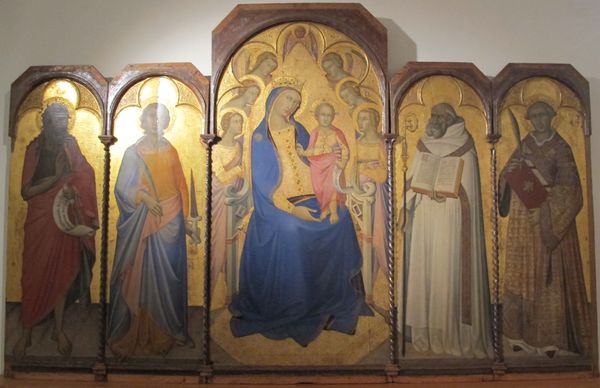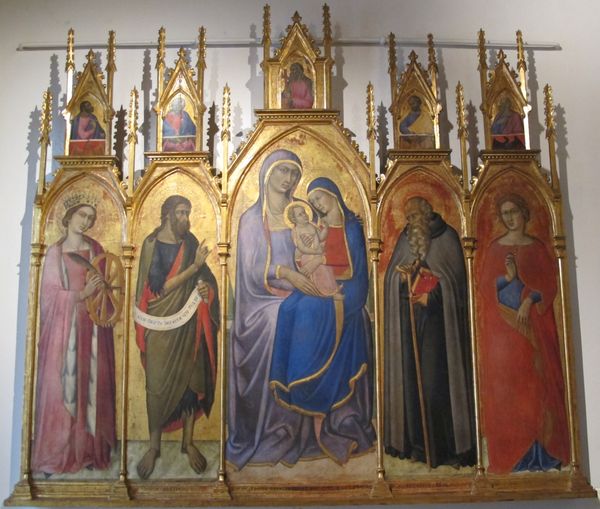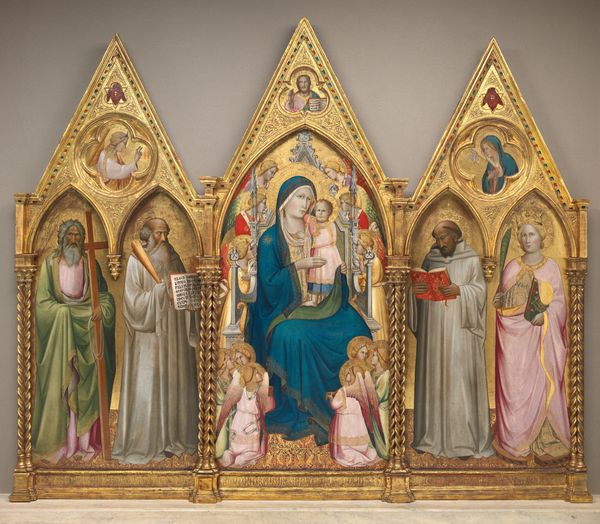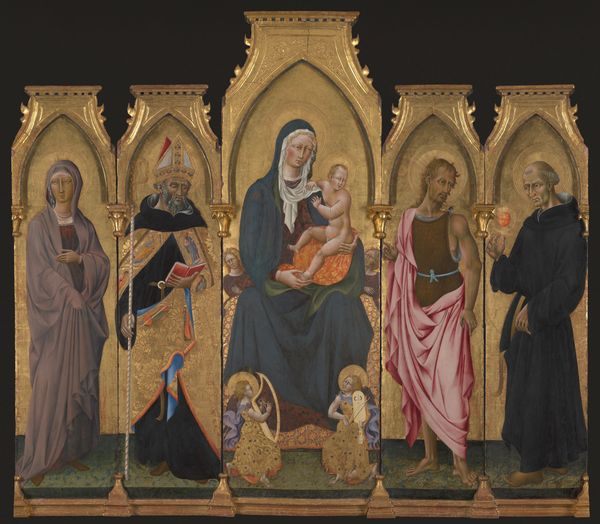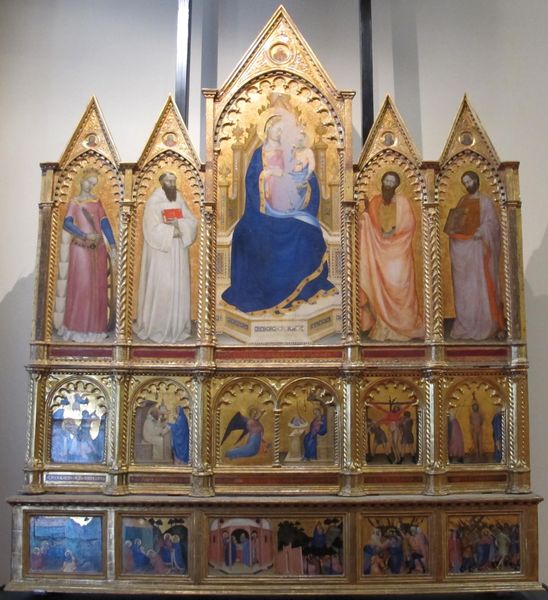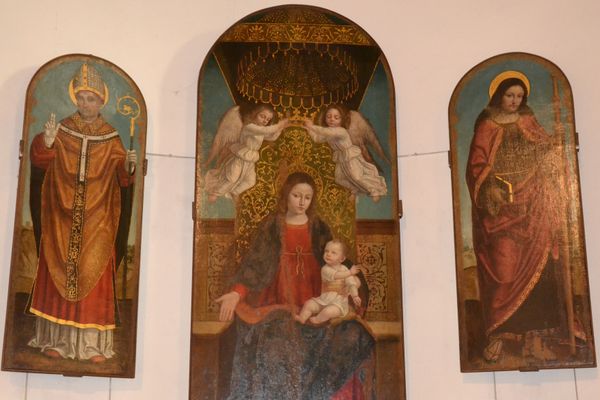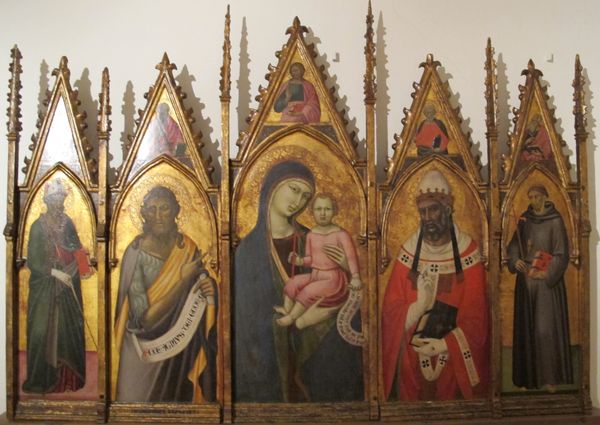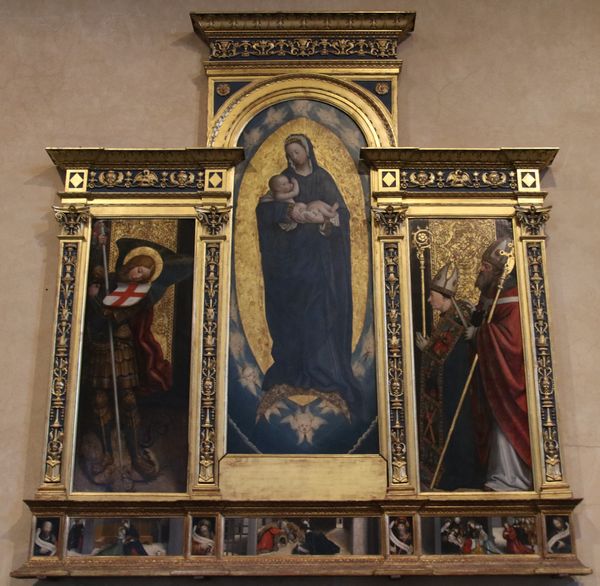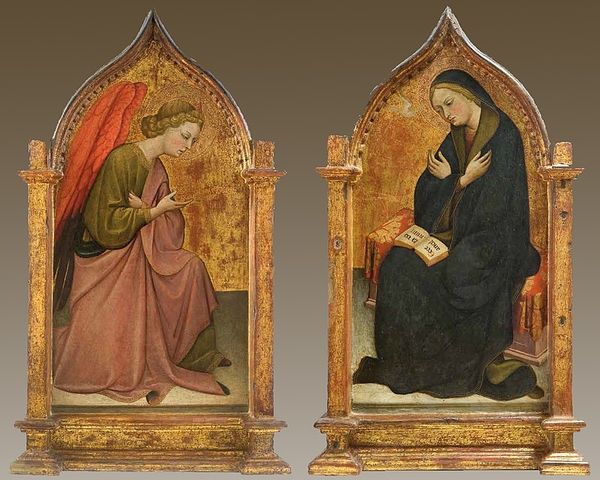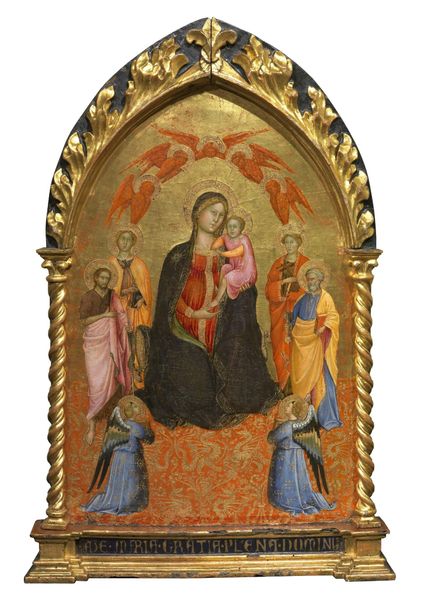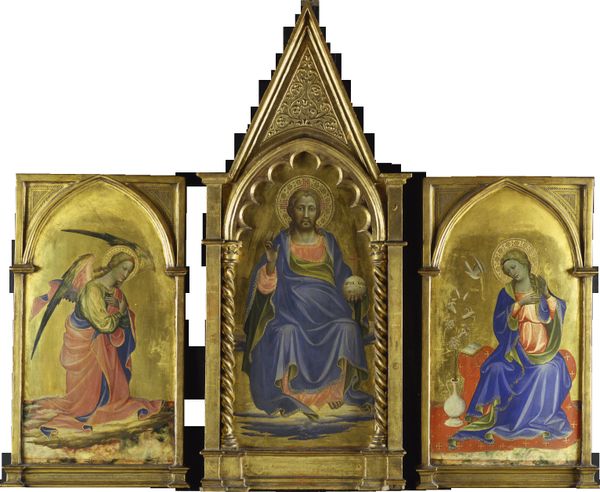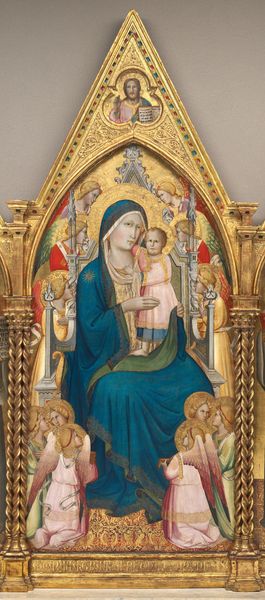
tempera, painting
#
portrait
#
medieval
#
allegory
#
tempera
#
painting
#
figuration
#
historic architecture
#
traditional architecture
#
history-painting
#
international-gothic
#
miniature
Copyright: Public domain
Editor: This is "Madonna Triptych," made with tempera, by Álvaro Pires de Évora, in 1456. The gold leaf and the arrangement feel very precious and intentional. What do you notice in terms of its historical relevance? Curator: It's fascinating to consider this triptych within its social and religious context. Triptychs like these were not just devotional objects but also potent symbols of status and power. How do you think the prominent display of wealth, through materials like gold, would have affected its reception in the 15th century? Editor: Well, it seems like it would reinforce the power of the church, or whoever commissioned it. Was that typical of art at this time? Curator: Absolutely. During this period, art served specific functions within society. Commissioning such an elaborate piece was a public declaration of piety and wealth. Notice how the central panel depicts the Virgin and Child surrounded by saints; it’s a very deliberate staging of heavenly court, wouldn’t you say? Editor: I do. It seems very formal, almost like a family portrait, but elevated to a divine status. I hadn't thought of art quite like this, as a socio-political tool! Curator: Precisely. Understanding the power dynamics embedded within a work like this can drastically alter how we perceive it. What do you make of the smaller panels? The narratives they present contribute to a larger religious framework and underscore the patrons' desired public image. Editor: I see the angel on one side and a sorrowful woman on the other. Together with the central image, they tell a whole story, like visual propaganda almost! This was very enlightening. Thank you. Curator: My pleasure. Reflecting on how art served these varied purposes allows for a more complete understanding of not just the object, but also of the culture that created it.
Comments
No comments
Be the first to comment and join the conversation on the ultimate creative platform.
